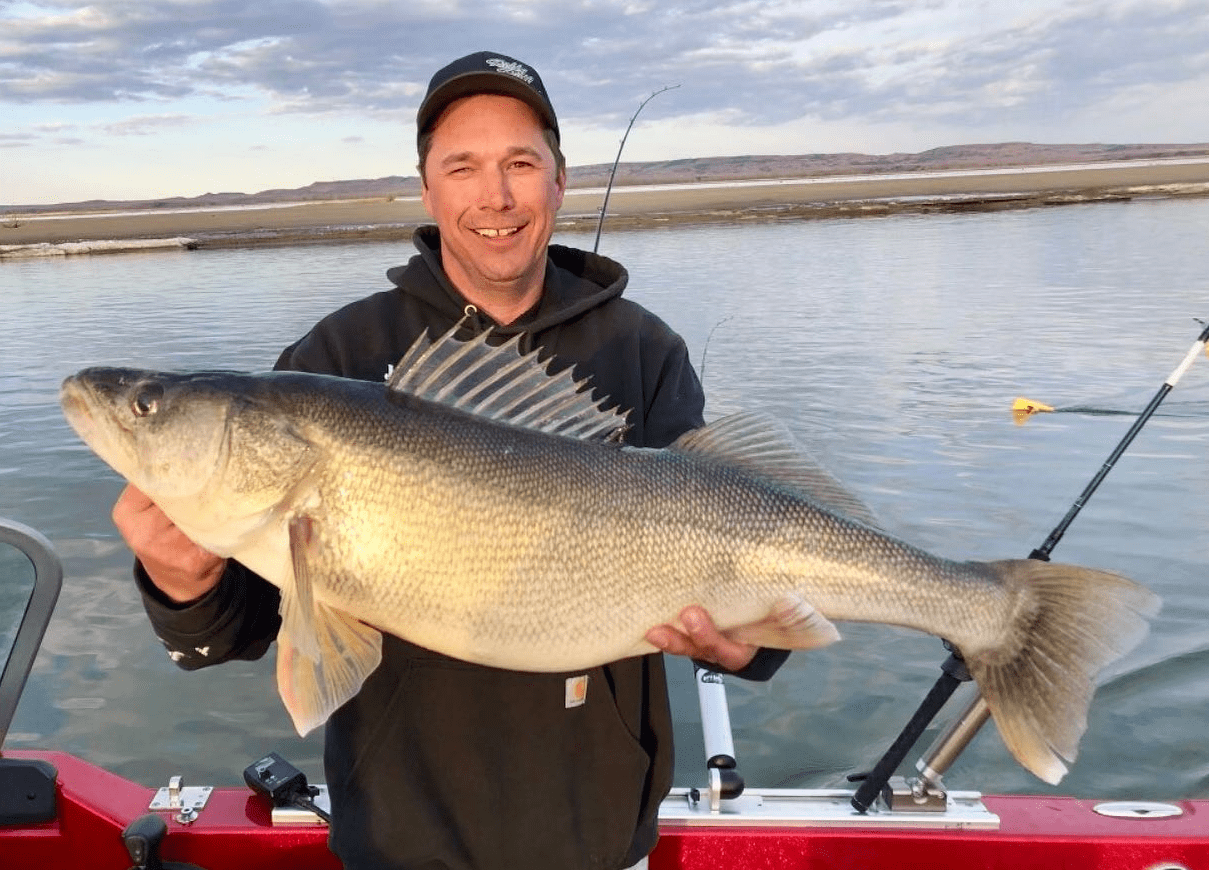
By Nick Simonson
Each year brings with it a number of stories that capture the excitement of hunters and anglers, detail challenges for those hitting the water and the field, and ultimately lift our spirits that opportunities will continue to be available for future generations, despite the demands on our landscape, a shifting populace and changing societal priorities. 2021 was no different, in the amazing catches, challenging moments and plans for the future of hunting, fishing and conservation.
Record Walleye
The most notable story coming off the water in 2021 was the catch of a 16.39-pound walleye at the headwaters of Lake Oahe by Jared Shypkoski of Dickinson in March which broke the previous North Dakota record of 15 pounds 13 ounces caught by Neal Leier on the Missouri River near Bismarck in 2018. According to fisheries biologists at the North Dakota Game & Fish Department (NDG&F), Shypkoski’s fish may be one of the few remaining members of a strong 2001 spawn which likely had produced the previous state record, and possibly a 16 pound, 9 ounce fish which the NDG&F rejected as being foul hooked and not a legal catch in 2020.
“About every four-to-eight years we have a really strong year class,” Paul Bailey, NDG&F South Central Fisheries Biologist explained, referencing great reproduction in the Missouri River system in 1995, 2001 and 2009, “as these stronger year classes reach their maximum age and size potential, that’s when our trophy potential correspondingly peaks as well,” he added.
Recent Lows
Across the landscape, sustained drought conditions from the Red River to the badlands impacted the recruitment of wildlife from upland birds to waterfowl to mule deer. The lack of moisture impeded the development of slugs, beetles and other insects which pheasant chicks rely on after hatching for the protein necessary to grow their feathers, regulate their body temperatures and ultimately mature into adults. As a result of the dry conditions, August roadside counts approached their lowest point in recent memory, and neared numbers not seen since the spring of 1997, following the region’s most brutal winter in a generation.
For waterfowl, lower water levels and lack of thick upland cover surrounding prairie potholes which host many of the nation’s breeding ducks each spring and summer reduced the success of nesting efforts. Thus, the number of broods seen by NDG&F surveyors was off nearly half from counts in 2020 and 23 percent below average when compared to the last 35 years.
Similarly, populations of mule deer suffered in the drought, as dry conditions plagued the health of pregnant does coming into spring and limited the amount of cover available to those fawns which were produced left them vulnerable to predators. A late frost coming on continued warmth also allowed an expanded spread of EHD which increased mortality of white-tailed deer in the western portion of the state, while also having impacts on mule deer, pronghorn, moose and even one bighorn sheep, which died from the virus transmitted by biting midges.
“I don’t think there’s any doubt [the drought] definitely did have an impact on our populations, especially in certain areas and in some units more than others,” said Jeb Williams, NDG&F Director, of the state’s mule deer herds, adding, “EHD had a bigger footprint this year, much further east and much further north than what it normally does, and then we also saw a long mild fall,” which he explained extended the virus’ presence on the landscape.
Strong Steps Forward
Strong bipartisan support in the U.S. House of Representatives has set the stage for the next major conservation bill which would dedicate more than $1.3 Billion to conserve and protect threatened species across the country and the habitats which sustain them and hundreds of other animals not facing population issues. The Restoring America’s Wildlife Act was introduced last February with more than 180 sponsors in the House and would help provide funding and a grant program for individual states to leverage partnership with non-government entities to make local impacts as part of each jurisdiction’s wildlife action plans which are based on science and public input.
Additionally, the U.S. Department of Agriculture (USDA) reported in September that more than 5.3 million acres of idled land across America were enrolled through Conservation Reserve Program (CRP) signups in 2021, with 1.9 million coming from the General signup, 2.6 million in the Grassland program signup and 900,000 acres in the Continuous signup, surpassing the agency’s goal of 4 million acres. For Grassland CRP signup, landowners submitted applications for more than 4 million acres, a record for that portion of the program. According to USDA tallies, North Dakota’s total CRP acres on the ground sits at around 1.25 million, South Dakota is at approximately 1.4 million acres headed into the new year.
